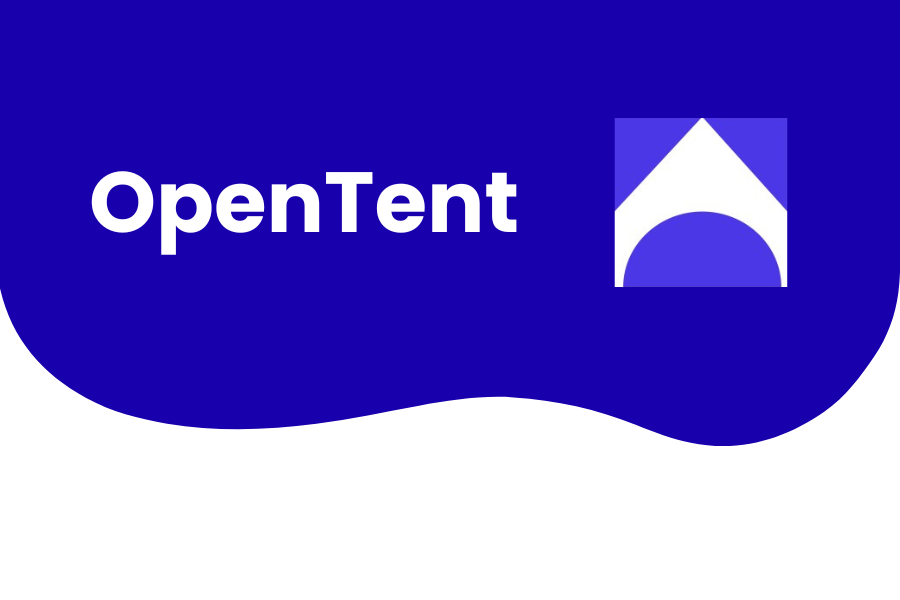“Stop Giving Them Homework”: The Benefits of On-the-Clock Wellbeing
.png?width=840&height=318&name=On%20the%20Clock%20benefits%20Banner%20(Wide).png)
Companies are waking up to the fact that most people are not just focusing on the salary when choosing a job. Rather, they are analyzing the company’s culture, as well as the benefits they offer. And so many businesses, especially those within the Small Giants Community, are expanding their lists of benefits.
But how do you get employees to actually utilize these benefits? And how do we turn work into a place that enhances and empowers wellbeing rather than detract from it or put it on hold? According to Jervis DiCicco, CEO of ProsperBridge, if an employee isn’t given time during their workday to activate their benefits, those benefits become homework and are less likely to be used effectively, if at all.
“Unfortunately, most of your employees are not harvesting the potential value of those benefits, because they don’t understand how to navigate those systems, they don’t trust the systems, and they don’t feel like they have the bandwidth to navigate the systems,” says Jervis.
To better empower their employees to show up as their best selves at work, ProsperBridge has set up a system so that benefits are activated while on-the-clock. This allows everyone to take better care of themselves and their families, have a more fulfilling life outside of work, and therefore feel more purposeful while on the job, as well.
Five Key Areas of Wellbeing
According to Jervis, there are five key areas of each person’s life that require attention in order for them to feel healthy, happy, and fulfilled. And it’s an employer’s responsibility to help each employee move towards their goals in these areas so that they can support a thriving workforce.
Let’s dive into each of these pillars of a healthy, balanced life, and why they matter.
Purpose.png?width=400&height=400&name=5%20Key%20Areas%20of%20Wellbeing%20(Jarvis%20blog).png)
Just like it’s important for an organization to distill its purpose into a clear message, it's equally important for an individual to do the same for themselves. This is easier said than done, and sometimes, an employees’ purpose is not able to be actualized while they’re in a particular role or working at a particular business. However, that doesn’t mean that they can’t find ways for their current situation to help them along their journey towards their purpose.
Relationships
A question that many people don’t ask themselves is this: does your job make the important relationships in your life better or worse? Oftentimes – and without any intention to do so – jobs are a hindrance on our relationships with friends and family. Simply by taking up so much of our time, as well as our energy and mental capacity, jobs take away from what we can give to the people we care about. And so, Jervis says, it’s an employers’ responsibility to redirect some of that time and energy in an intentional way back towards improving those relationships. This can take the form of services such as teletherapy, couples counseling, and more.
Mental and Physical Health
Activity, nutrition, and rest are all key aspects of health, and approaching them looks different for each individual. While a daily hour-long gym session isn’t quite feasible to offer employees while on-the-clock, other tools such as therapy or time with a professional to map out diet and exercise plans are ways an employer can help an employee along their health journey.
Financial Fitness
Financials are a huge stressor for most Americans, particularly in today’s economic climate. With a housing inflation rate that has spiked wildly higher than wage increases over the years (not to mention the high costs of things like education, childcare, and other life expenses), paychecks simply aren’t supporting people as well as they once did. Thus, to help employees utilize their earnings in a goal-oriented way, while also helping alleviate cost of living stressors, it’s important for employers to help their teams gain control of their finances. Education and professional tools can go a long way in supporting an individual to understand their options and move towards their financial dreams.
Future and Career Pathway
This final category links back to purpose and is focused at looking ahead. Employers should be empowering the futures of their employees, whether that’s at their company or not. In fact, it’s not realistic to project a mindset that everyone will move up the ranks and optimize their careers in one place because that’s simply not feasible the way most businesses are structured. Rather, you should be encouraging your people to ask themselves which activities at work fuel them, which ones drain them, and in which areas they are looking to develop themselves.
Putting in the Time
To ensure that employees are able to focus efforts on each of these key areas of wellbeing, ProsperBridge allows 90 minutes a month of paid company time for each employee to dedicate to utilizing their benefits.
Jervis says that the most precious resource employers have access to is their employees’ time. And the best way to optimize it is to incorporate wellbeing into business hours.
Employees often use time at work to deal with personal business anyway (or, it consumes their energy during work as a stressor). Blocking out set amounts of time allows them to feel empowered and intentional with how they navigate their benefits package.
“If you’re not allowing employees time to use these things, then all you’re doing is checking a box on a piece of paper.”
While employers can’t give employees limitless on-the-clock time to meet their goals, they can give them the tools and allocated time to set things in motion. And even though education is vital, it is not an outcome; action is required to reach goals. In order for individuals to be more likely to execute their plan, as much of this benefits time as possible is dedicated to actionable items rather than theoretical tasks.
For example, ProsperBridge has set up their system so that employees are encouraged to use two 60-minute blocks of time per year for doctor visits; those two months, they have an additional 30 minutes to use in a different area. For the other months, employees have three 30-minute blocks of time to use, which are established in their calendars. These guided wellness activities should rotate between the five pillars and can include things such as creating a debt management plan, discounted estate planning services, teletherapy, and more.
Dedicated time to purpose at ProsperBridge is spent exploring and building into an individual’s career pathway. Regardless of whether that path keeps them at ProsperBridge or means they’ll eventually move on, Jervis says that they have two official check-in sessions annually with employees to make sure that their soul is being fed, and that they’re moving in the right direction.
While ProsperBridge allocates 90 minutes a month, other companies just starting out with this type of system may choose to begin with 30 minutes of monthly time dedicated to utilizing benefits. Starting small, and building up towards more on-the-clock benefits time, can be a good way to integrate wellbeing so that it feels helpful and reenergizing rather than forced. And Jervis recommends all benefits time be blocked out on employees’ calendars so that it’s prioritized and used consistently.
At the end of the day, love is a key guiding factor to a benefits plan such as this. When there is a sentiment of love and care, the employees feel that energy, and develop a stronger sense of trust with the organization.
Ensuring Success
Employers often feel a great deal of responsibility towards their employees because they are the distributors of income. And while income can’t solve for everything, it is the opportunity for outcome and opens up possibilities.
“All income is, is the opportunity for outcomes. And we’ve got to start thinking of employment not as a chance at a good life, but as the pathway to a good life.”
Jervis DiCicco
As previously mentioned, employee’s time is the greatest resource that employers have available to them. With this thought in mind, it may seem counterintuitive to dedicate company time to tasks that aren’t directly tied to company goals. However, carving out time for employees to take full advantage of their benefits ensures that they are growing as healthier, more well-rounded individuals, and therefore can show up to their role as the best versions of themselves.
Following a benefits plan like the one ProsperBridge has implemented is key to building trust with employees, and therefore having a more productive working relationship. But laying out the plan isn’t enough. The most important factor to ensuring that employees utilize these benefits, and help themselves to enhance their life, is accountability.
“Assuming you set goals, there’s one simple step you can take that, more than anything else, increases your chances of success. And that’s accountability,” says Jervis.
We all need a second party to hold us to our word and help us to keep working towards our goals through action. However, that accountability partner shouldn’t be an employer or manager. In fact, there are some areas, such as a person’s marriage or their physical health where it’s inappropriate for an employer to inquire after these matters directly. Rather, it should be a professional on the subject (like a nutritionist or financial advisor) or a peer. And the accountability partner relationship can be as simple as explaining the goal to another person and updating them from time to time on your progress.
Conclusion
It’s not the fault of employers that employees now, more than ever, are having a harder time with an increasing cost of living and other aspects of wellbeing. Unfortunately, though, this conundrum is the problem of employers because it affects the health and productivity of employees, and in turn leaves a mark on the company’s bottom line.
Allowing for on-the-clock benefits may take extra effort in terms of adjusting perspectives and follow-through, but it doesn’t have to be hard work. And the effort it takes to show these expressions of care can be life-changing for employees. Not to mention, Jervis says that the ROI that PropserBridge has seen from their offerings is a clear success. According to him, they see $5-8 in return for every $1 they spend on the benefits services they offer.
Giving employees permission to use company time to better themselves does, ultimately, help the organization’s bottom line. When you care for your employees, they are likely to be happier, more productive members of your team, talk positively about the culture among friends, and even if they leave, will still retain goodwill towards you. This can help build a strong culture, as well as a wider talent pool and customer base.
The next time you’re looking to revamp your company’s benefits package, consider giving your employees less homework and more reason to be excited to come to work. The start could be as simple as asking employees what fuels them, and finding ways to help them dig deeper into that.






Submit Your Comment